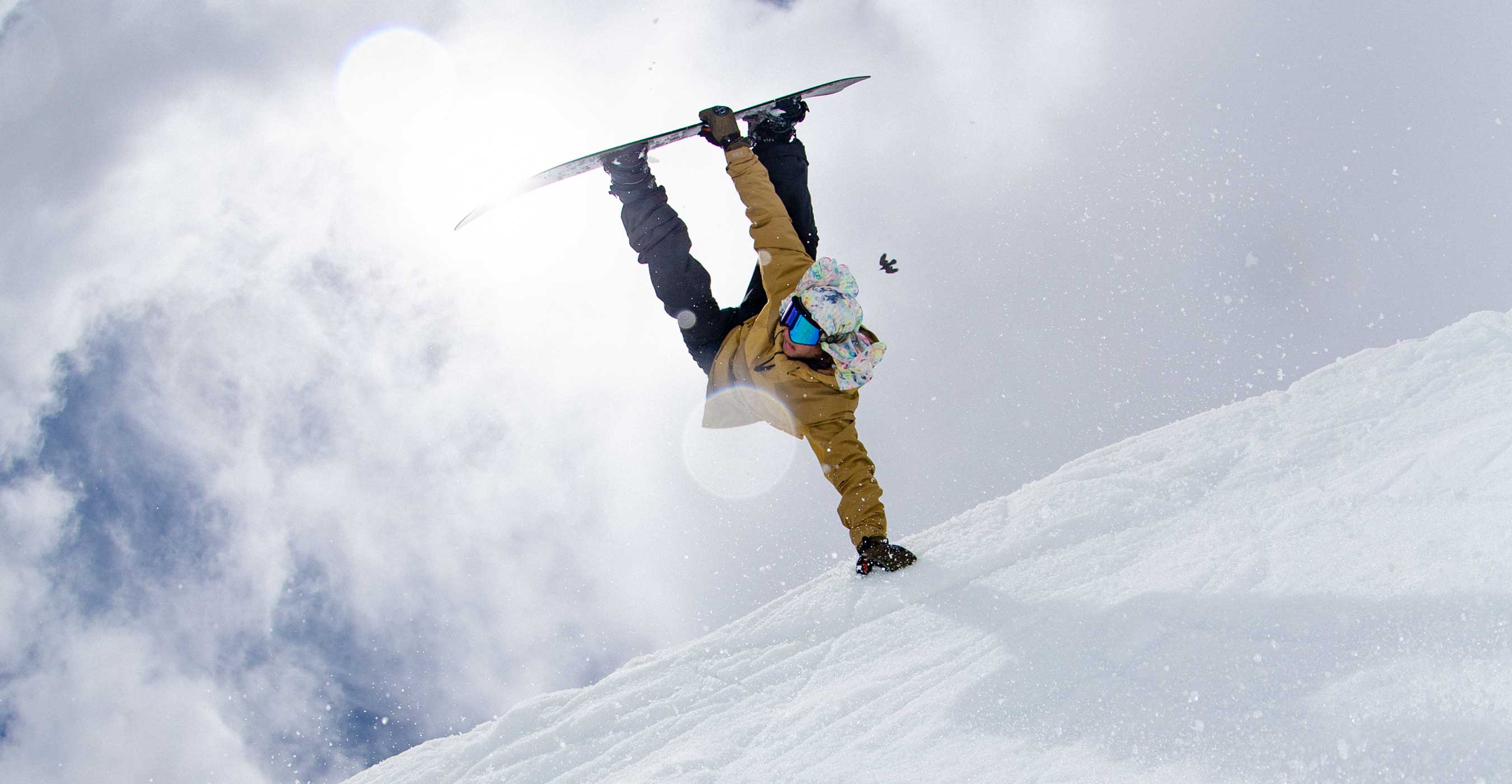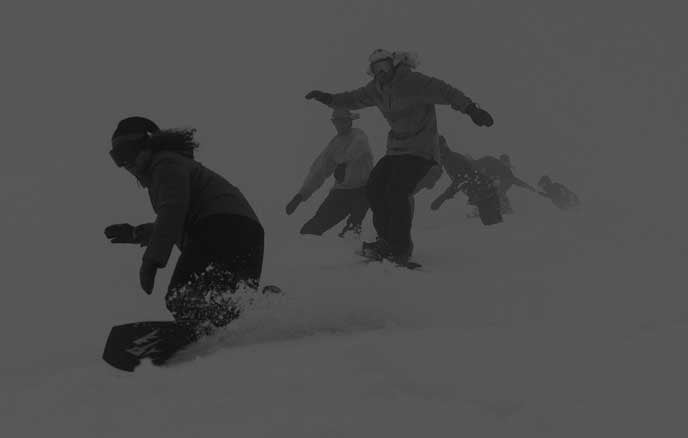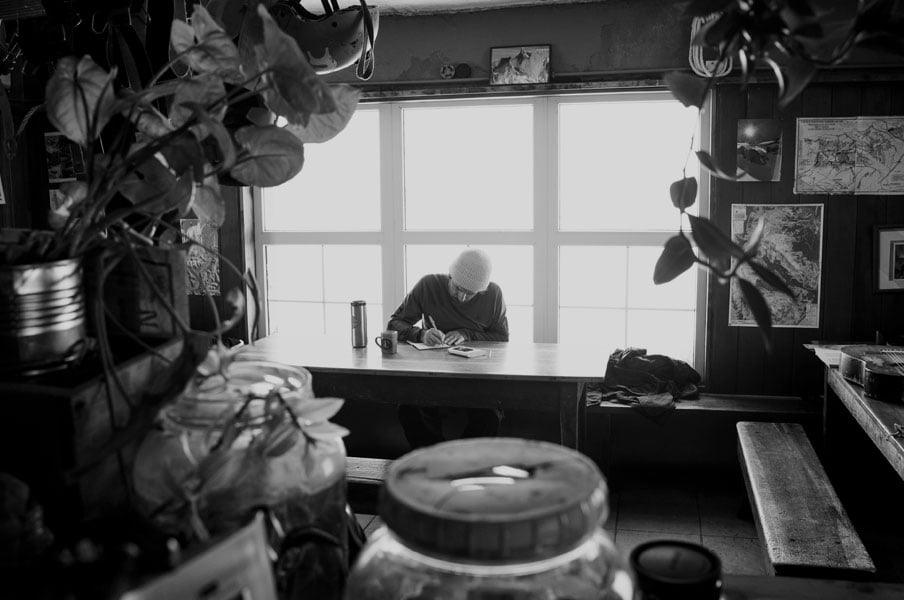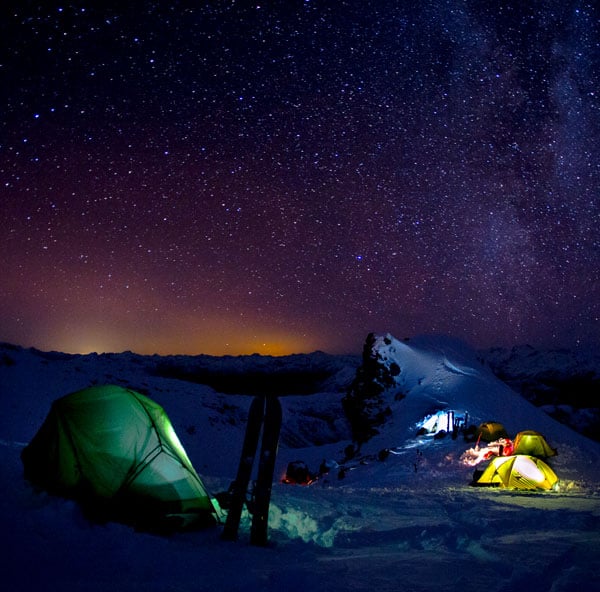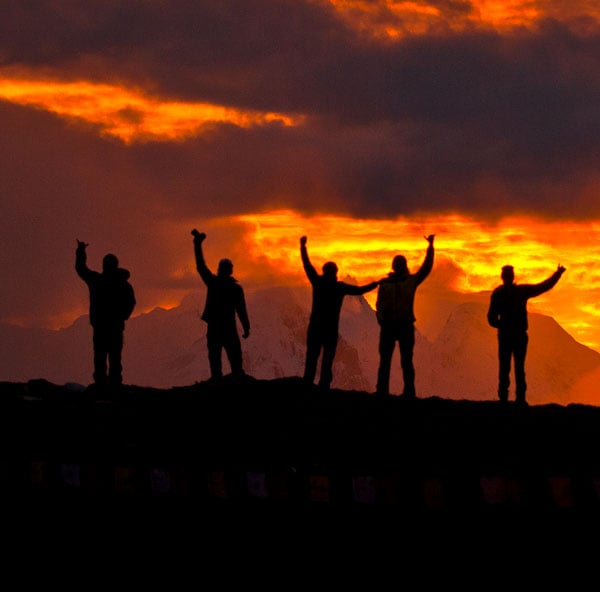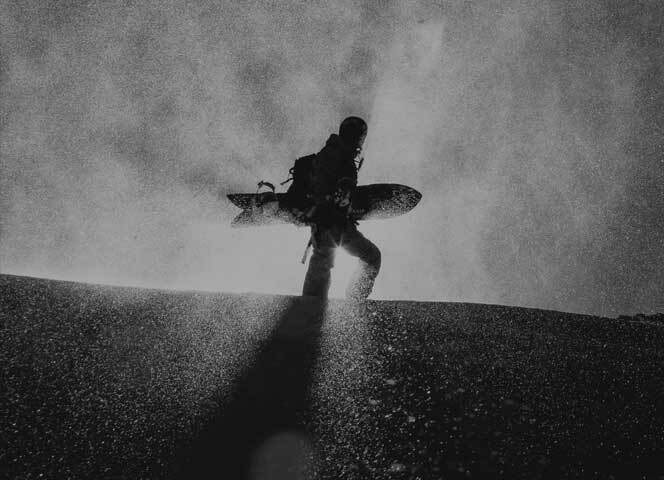Spring shred tips - Board tuning, layering and terrain selection
Adventure Season
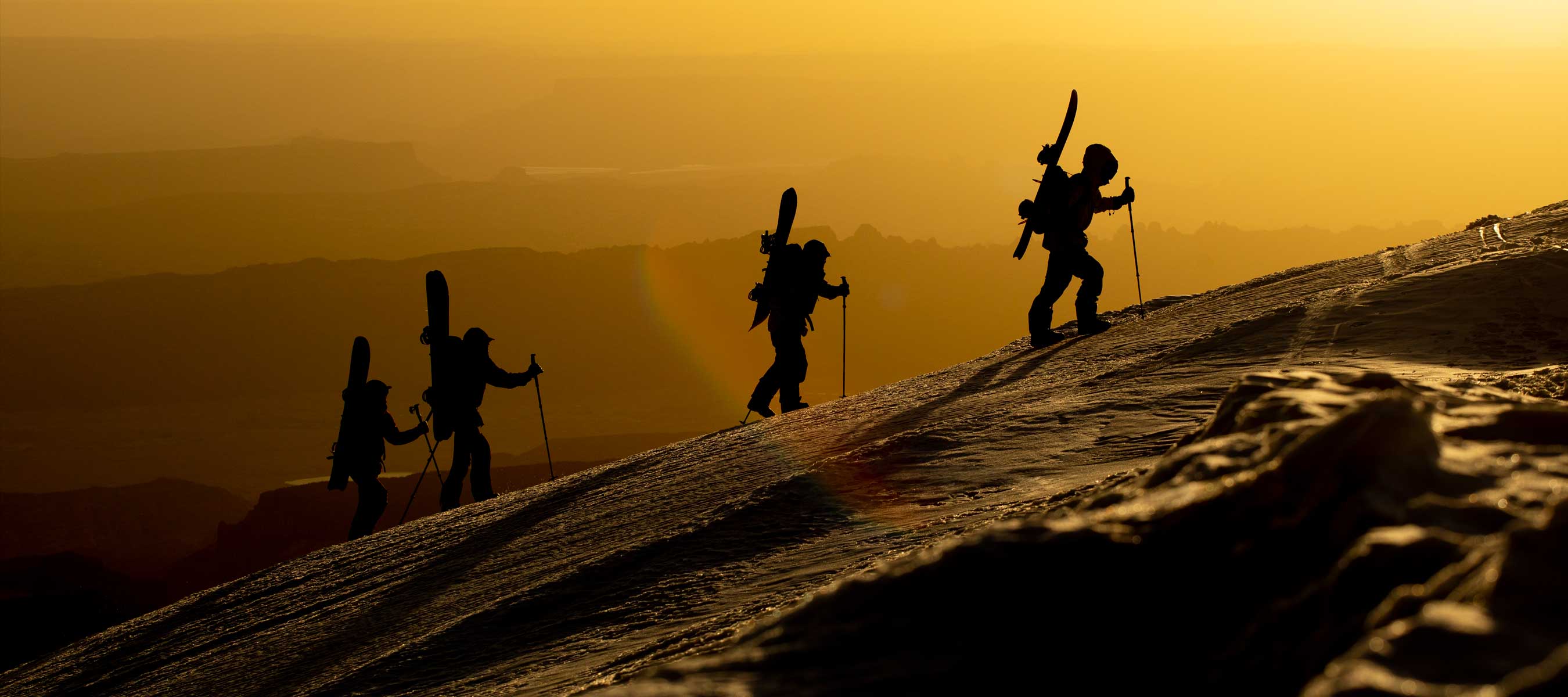
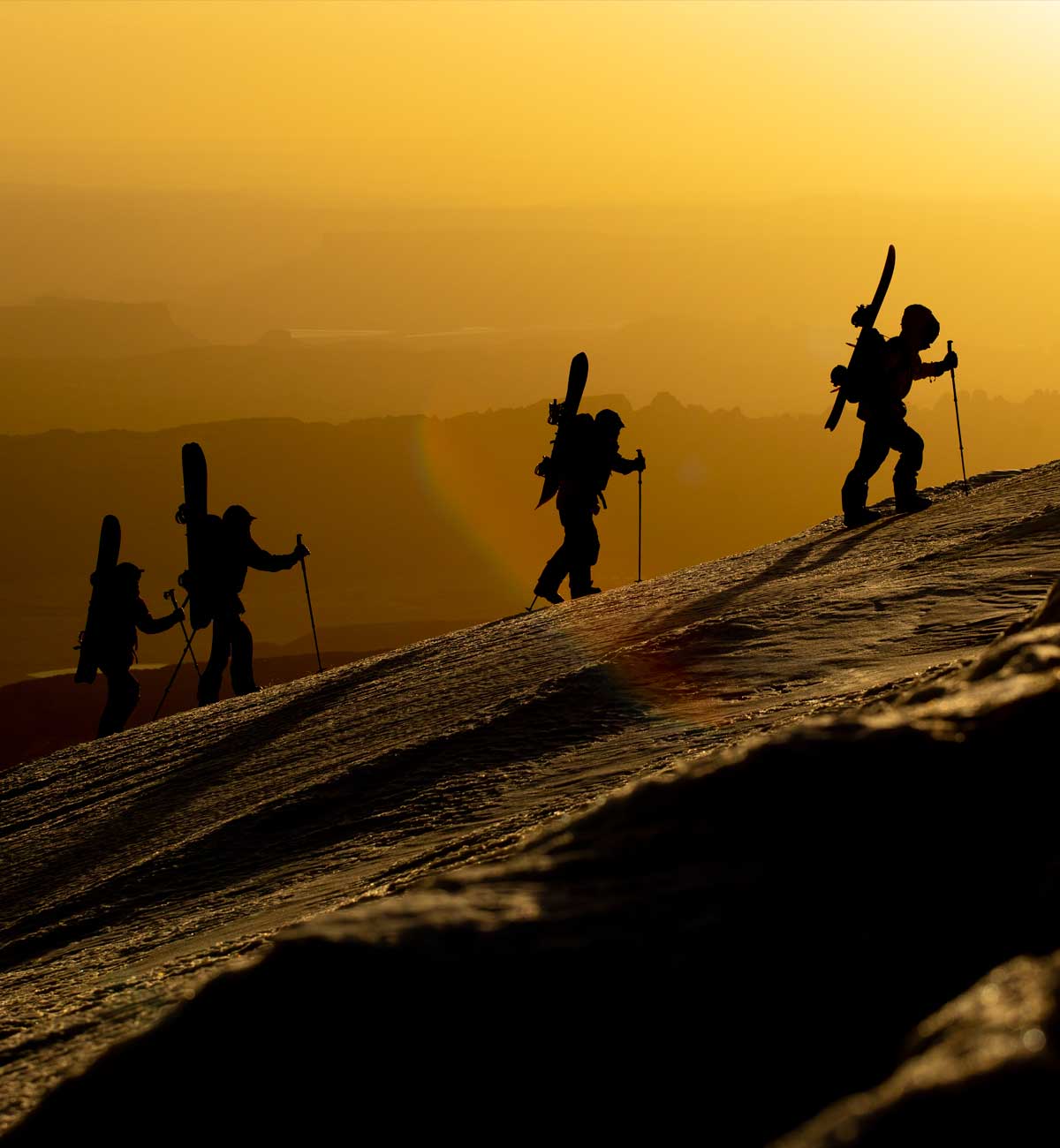
The deep days of winter may be in the rearview mirror, but there is still plenty of shred season left ahead. Spring brings longer days, stable weather and hero snow providing an opportunity for alpine adventure and resort radness unlike any other time of the year.
To make the most of a spring shred day requires a different bag of tricks than a mid-winter shred day though. Gear or touring decisions that delivered on a cold February day might not work out so well on a warm spring day. If you want to keep ripping in the sun & slush it’s critical to put some forethought into your equipment and when + where you go ride.
To help dial you in wherever you get the chance to ride this spring, we’ve assembled a collection of spring shred tips. Follow these tips to score the best snow, stay cool on a hot day and to keep your board gliding fast through the inevitably sticky icky stuff.
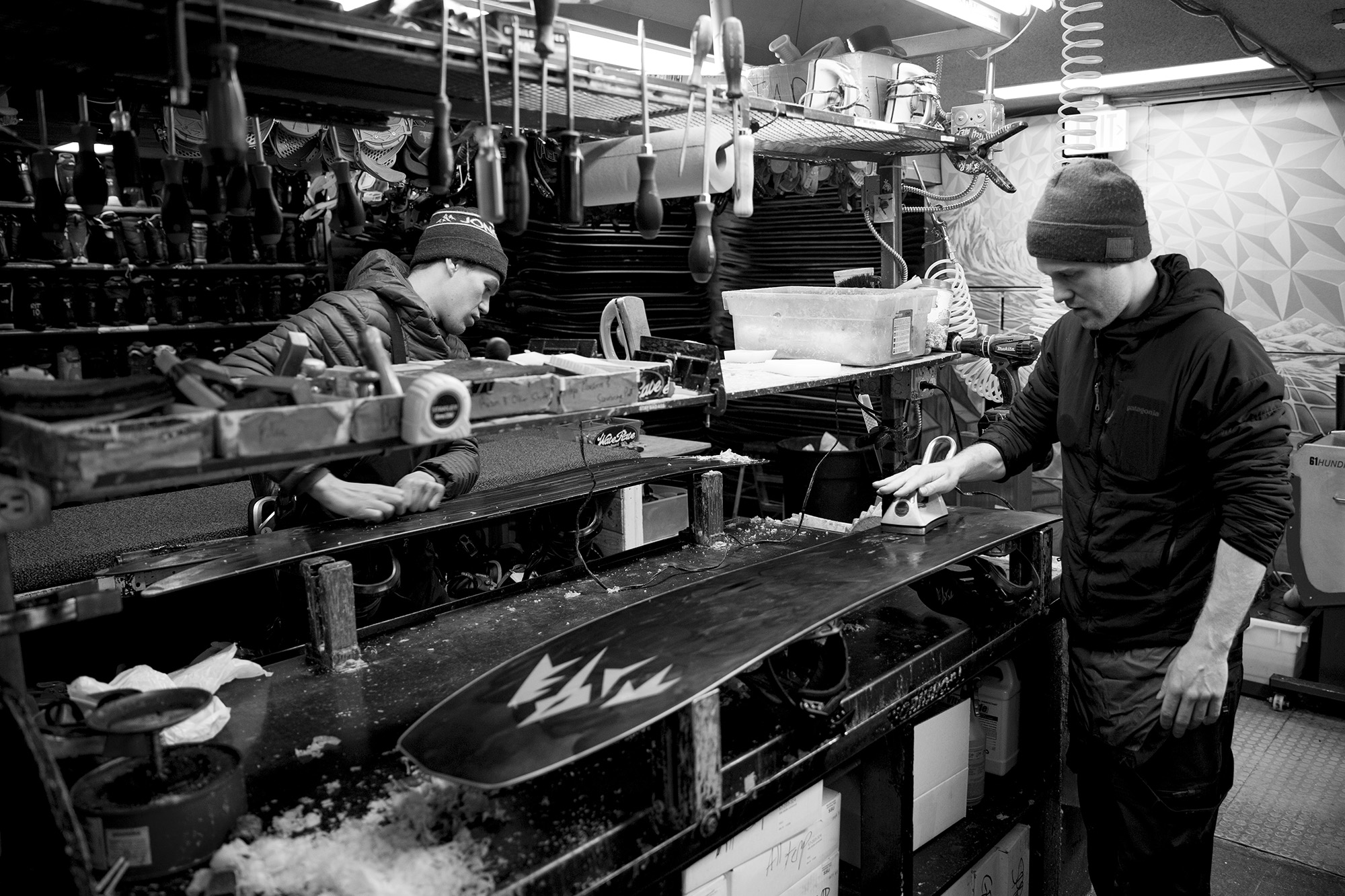
Spring board tuning tips
A well-tuned and waxed board is your best friend come spring time. Spring snow has very high water content and the movement of your base and edges causes friction with the water on the surface layer of the snow. When your board feels grabby in wet snow it’s because the base is literally suctioning to the snow because of the friction. Tuning and waxing your base allows it to repel and break up the water running under your board that causes the friction.
- Get a base grind with a warm structure. A structure is a textured pattern that’s stone ground into the base by a professional tuning machine. Jones boards come with a factory stone ground base but they do not have a structure because there is not one structure that is good for all snow conditions. Some structure patterns are designed for cold snow and other patterns are best for warm snow. Structures for warm snow are deep and course. The "aggressive" pattern breaks up the water molecules and pushes them out from under the board. If you live in a maritime snowpack you can usually get away with riding a warm structure all season. Ask your local tuner what structure he recommends for your snowpack.
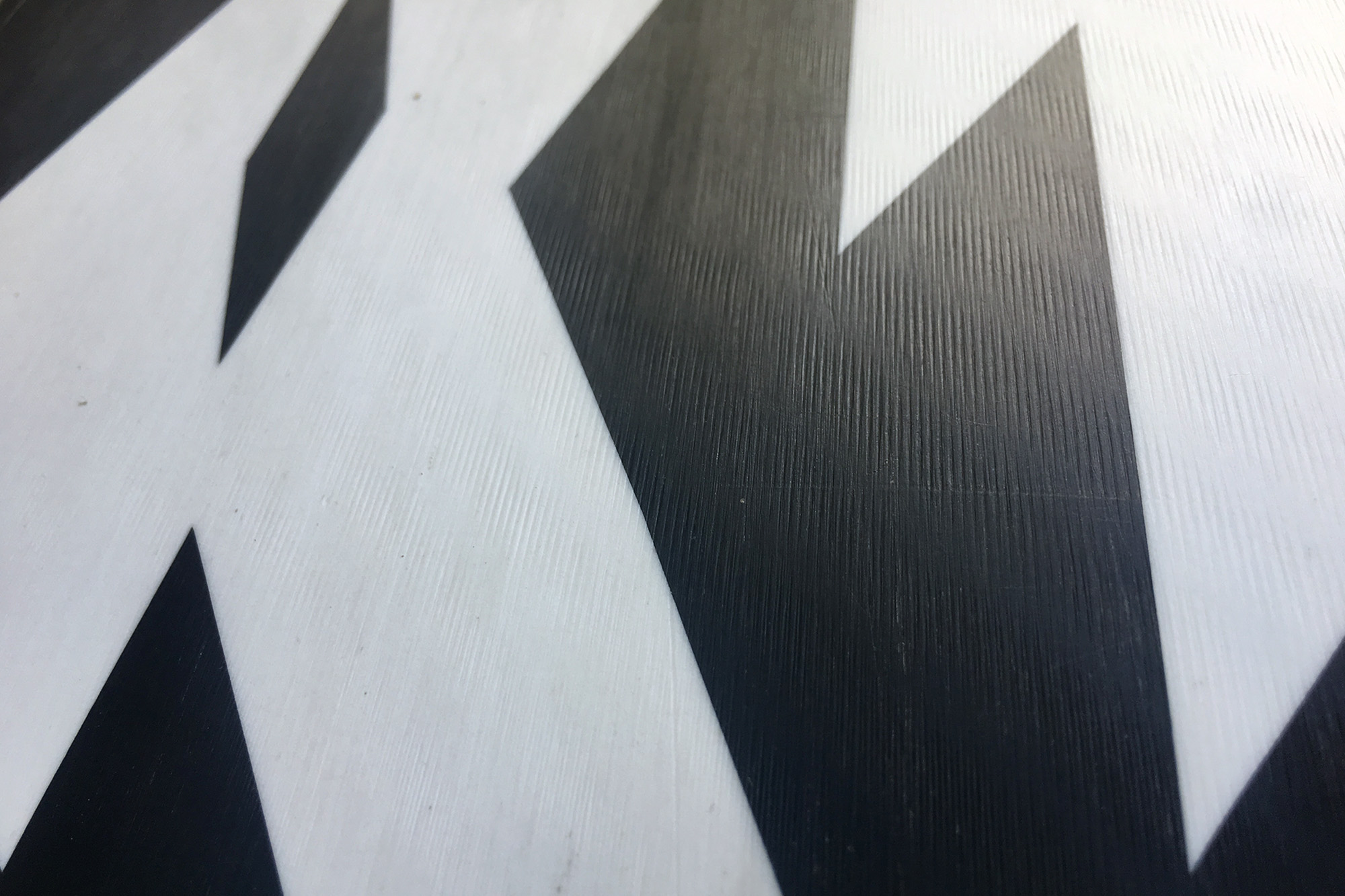
- Wax often with warm wax. Also consider using a moly or graphite wax if the snow is dirty. These wax additives repel dirt. It’s not uncommon to wax before every spring resort day if you are serious about riding a fast board.
- Scrape your board well after waxing. The goal of scraping is to remove the wax from the base surface. You don’t want to be riding on a surface of wax. Snow crystals are sharp and they stick to wax. Wax should only remain inside the pores of the base like a sponge. The concept is to ride on the base material using the wax as a lubricant. Brushing your base after waxing can also help remove more wax and open up the structure pattern.
- Sharpen your edges. Unless you are a park rider, it’s really nice to have sharp edges in the spring. With sharp edges you can lock into carves harder and hold onto an edge better on steep firm snow. After a long winter of hitting rocks your edges might be too haggard to get razor sharp again, but even a little bit of sharpening can go a long way.
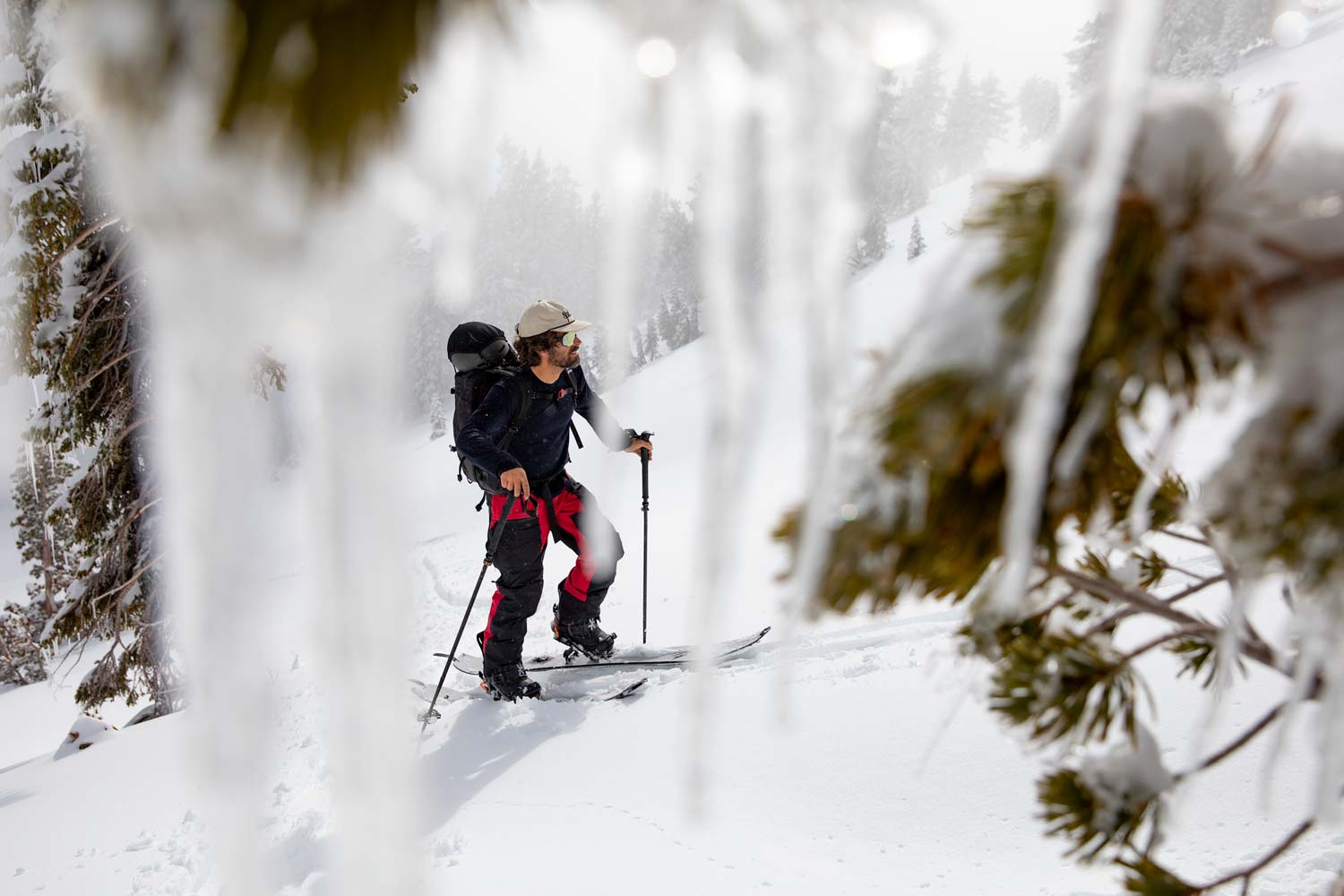
Spring layering tips
What you are wearing when you leave the resort parking lot or the backcountry trailhead on a warm spring day can make or break your mountain experience. Every layer you bring with you should have a purpose and be designed to work with your other layers to help you stay cool + comfortable and keep sweating to a minimum.
- Lightweight synthetic base layers are ideal for warm resort days or high output backcountry days. For extra sun protection, wear a lightweight base layer that has a hood.
- If the forecast is clear, leave the storm proof shell jacket at home and bring a breathable, movement focused jacket like the Jones Peak Bagger that's designed to help you dump heat as you move.
- If you feel yourself starting to warm up on the skintrack, take off your outer layer before you start sweating. A wet base layer is not only uncomfortable, but it can be downright dangerous if the weather changes or you get injured and require an involved rescue. Hypothermia is a real concern even in the spring.
- Though temps may be too toasty to ever put it on, bring a mid-layer on long touring days in case of a rescue scenario that keeps you in the mountains after dark.
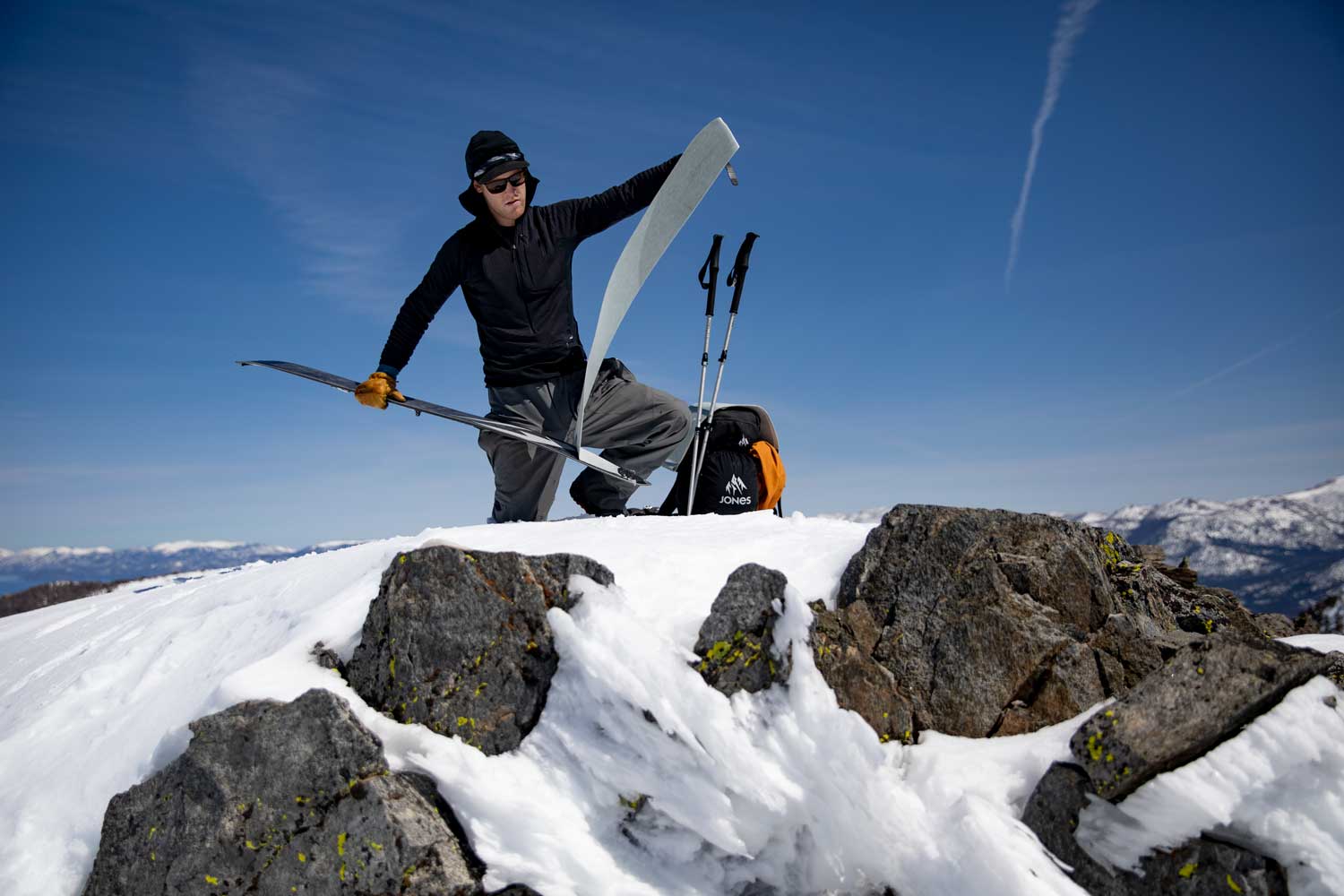
Skin maintenance tips
- Completely dry skins after every use. Find a place to hang them and any moisture on the glue side will dry relatively quickly. The skin plush may not dry completely overnight, but that won't affect performance.
- Place cheat sheet in between skins when not in use. The rubber mesh cheat sheet can help keep your skins drier on warm touring days in wet snow. Cheat sheet should also be used for skin storage over the summer.
- Remove any pine needles, gravel or dirt debris that sticks to skin glue after each tour. If your skin glue picks up a bunch of debris, try to pick it out. Dirty skin glue does not perform well.
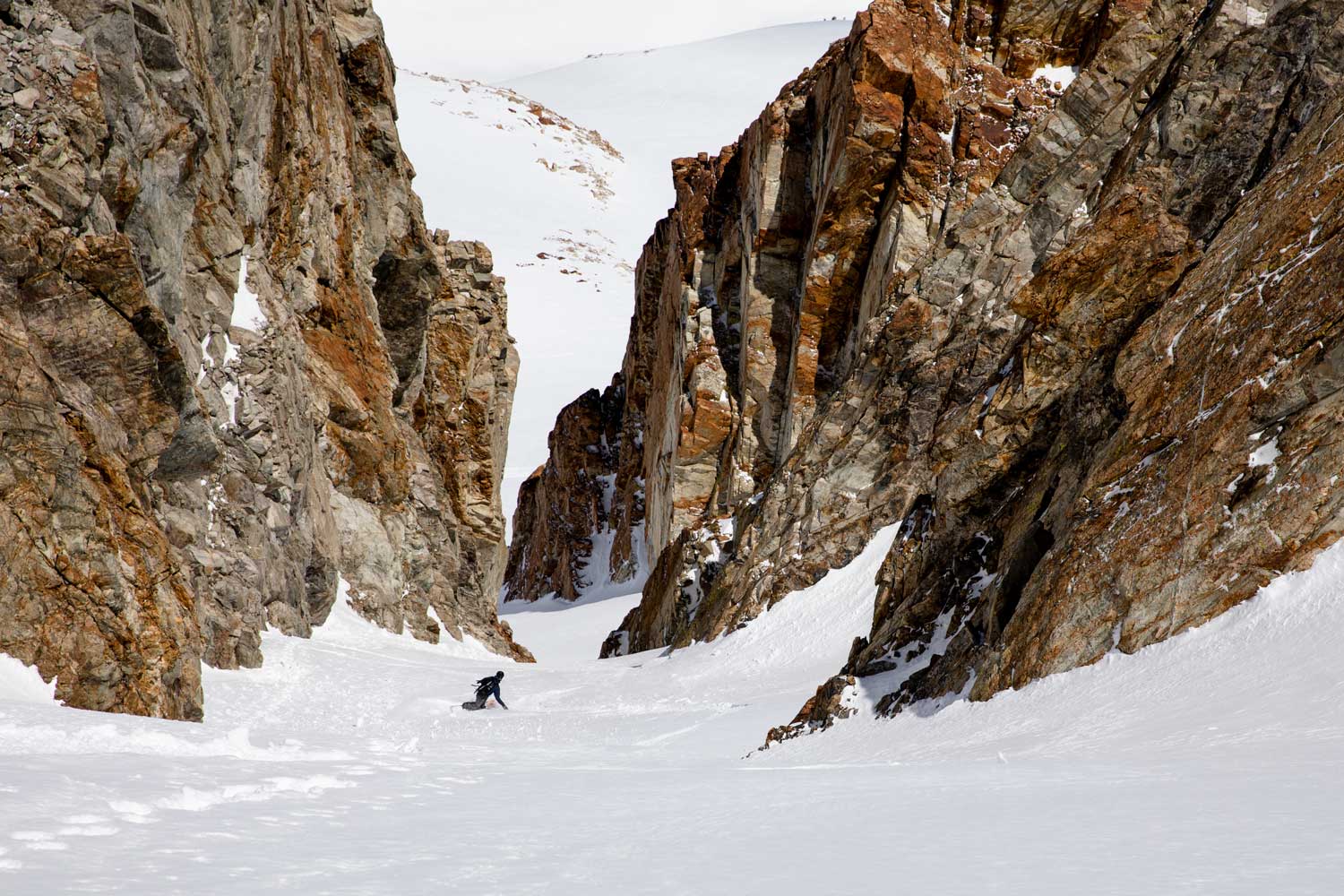
Spring terrain selection and touring tips
Whether you are ripping the resort or touring in the backcountry, terrain aspect plays a massive role in the quality of snow you will find. If the sun is blazing you’ll want to follow it’s path as you choose which lines or chairlifts to ride throughout the day.
- Start the day with south and east facing terrain. South and east facing terrain gets first light so it will soften the quickest. At lower elevations that don’t see a hard freeze the snow may be soft enough to shred within 20-30 minutes of sun exposure. At higher elevations south and east facing terrain may take a couple hours to soften, especially if there is a steady breeze or there was a hard freeze the night before. South facing terrain also has the shortest window of soft vs. rotten because it gets the most sun. Big south lines might look appetizing in late afternoon but that’s where you’ll find the highest potential for wet slides. If you have a south facing line in your sights be ready to drop in as soon as it gets soft enough to safely shred. If your skin glue picks up a bunch of debris, try to pick it out. Dirty skin glue does not perform well.
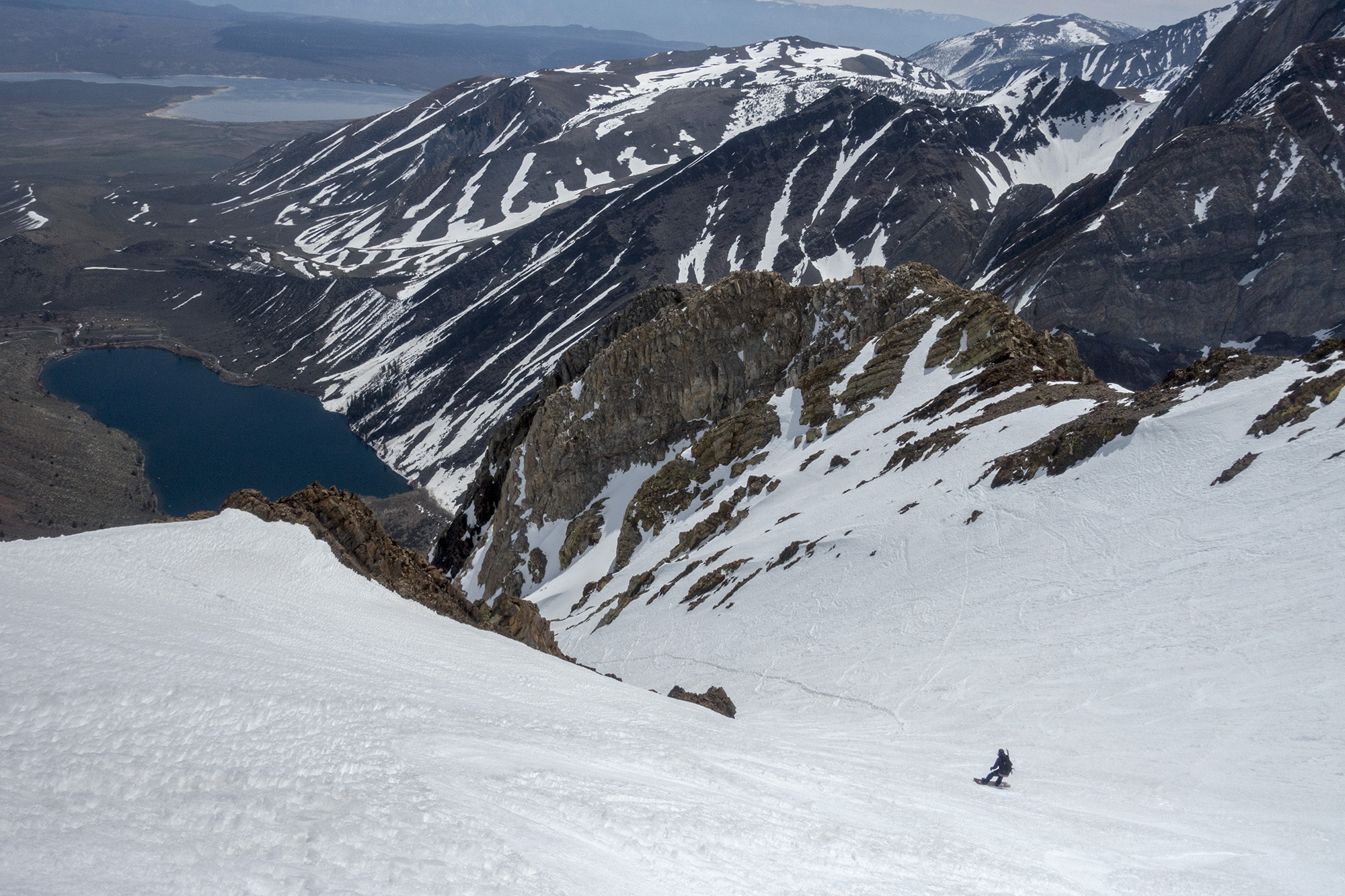
- When to ride north and west facing terrain depends on the ambient temps, sun exposure, wind speed and the previous overnight temps. By May the sun is high enough in the sky that most north facing terrain should be getting some light by 11am unless it is extremely protected by overhanging terrain. If it’s a warm day with no wind it might only take an hour of light to ripen up a north face. Or, if it’s sunny but slightly cold, or there is a north wind, the terrain may never soften, even after 6 hours of sunlight. If you are going for a big north facing line try to find a similar north slope where you can test the conditions before you commit to dropping into a potential ice skating rink.
- Savor last light on a west face but recognize when it’s sketchy soft. West facing terrain sees last light so it’s the perfect aspect to ride for a late afternoon or sunset line. That extra bit of late sunshine can overcook the snow sometimes though, especially if the terrain has a slightly south west aspect to it. Pay attention to just how the soft is as your climbing up or inspecting the line from the top. If your sinking into the slushy snow over your boot top or the snow is pinwheeling off your boot track be extra cautious of wet slides.
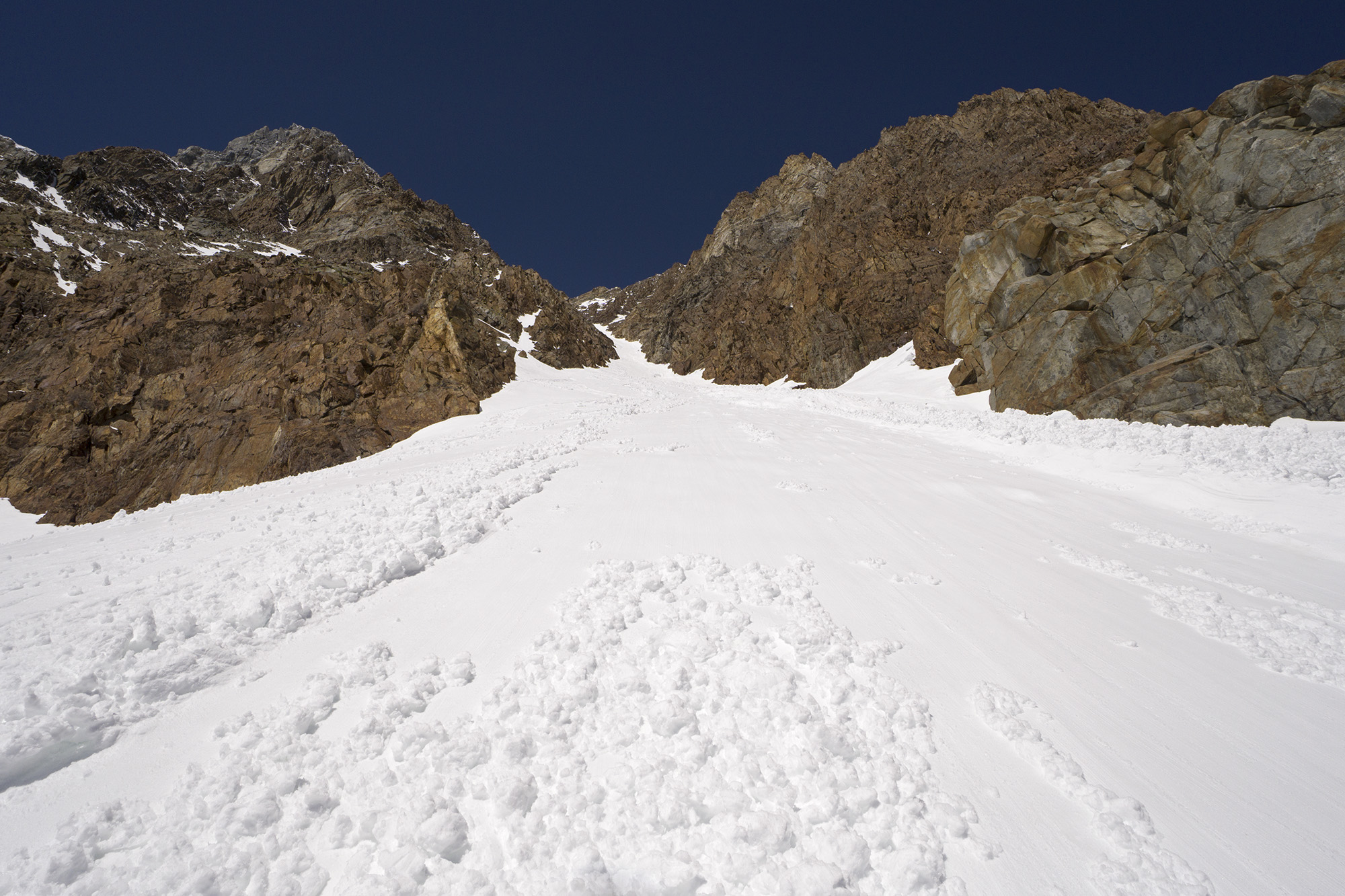
- Big backcountry objectives of any aspect may require a dark-thirty start. Deciding when to start on a big backcountry day can be tricky. While it’s possible to be too early and get to a slope before it softens, the bigger worry is getting to a steep slope too late when the snow has become too soft to safe descend. When in doubt, leave a little earlier than you think. It’s easy to kill time, it’s hard to make up time. That could easily mean you need to leave the trailhead before the sun comes up at 4am to be on top of a south facing line at 10am.
- Pick and choose your spring shred days based on the lowest overnight temps. Cold nights are a critical ingredient to grow the sweetest corn snow. Successive days with overnight lows below freezing sets up a melt/freeze cycle that smoothes out the snow and keeps it gliding fast as it slowly melts away each day.
- Watch out for weather windows where the overnight temps stay above freezing or there is an inversion that keeps the mountain tops above freezing. If the snow is not freezing at night, conditions are likely to be sticky or at least less than ideal. When spring snow does not freeze for multiple days, it starts to rot and the bond of the snowpack to the mountain side can get dangerously weak, especially in terrain where the snow is sitting on solid rock. If you can see or hear water running under the snowpack also be extra careful as the force of a big turn on steep terrain may be enough to cause a climax slide and break away the snowpack from the slope.
WHEN IN DOUBT… WAX + LEAVE EARLY!
HAPPY HARVESTING!
